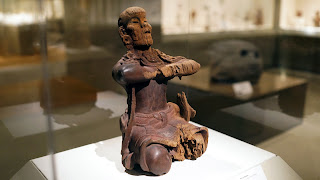While looking over the smart history website, I was immediately drawn to Asia. All across the continent, you can find buildings, statues and works of art over thousands of years old. Diving in a bit further, I could not take my eyes off of Rajarajesvara Temple. The amount of detail brought to life at this scale is incredible to me. Think about how this was done in the Eleventh Century C.E. with little technology, and few tools to get this type of result. I am so interested in knowing the process and execution in creating something like this.
https://smarthistory.org/temple-tanjavur/




Comments
Post a Comment